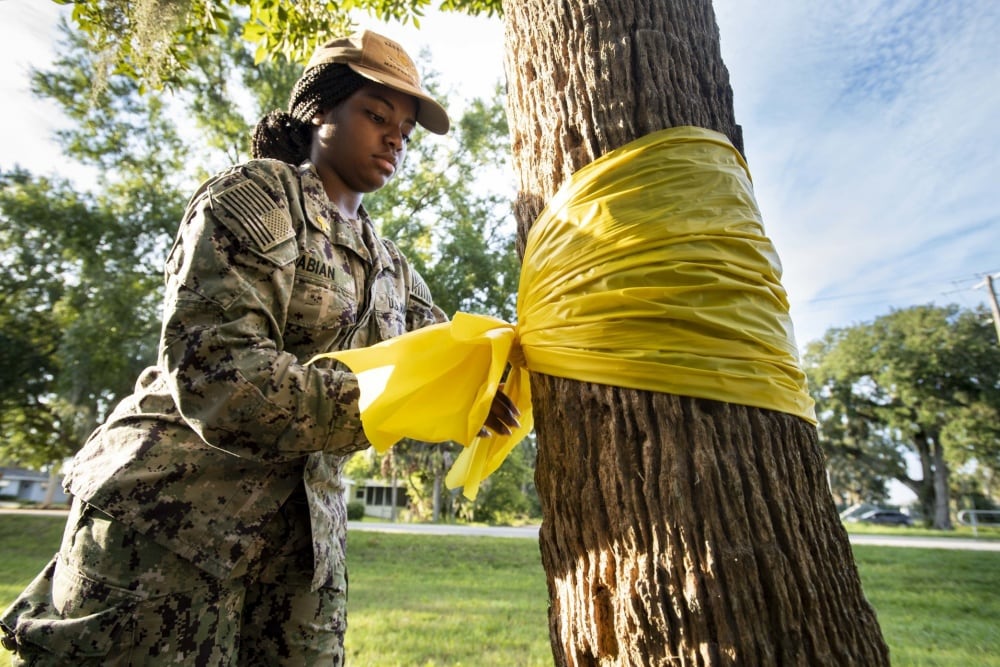WASHINGTON — The U.S. Army said it identified a power problem associated with new communications and network tools and Stryker combat vehicles during a live-fire exercise in Europe.
Soldiers with the 3rd Squadron, 2nd Cavalry Regiment put Capability Set ‘23 equipment to the test in recent weeks at Grafenwohr Training Area in Germany, as officials from the Army’s network modernization office and test-and-evaluation command looked on.
One issue identified during the exercise was related to power — or lack thereof. The Strykers soldiers relied upon were power constrained during the event, hamstringing what could be accomplished in the field. Questions lingered about whether it was the newly fitted kit, the integrated tactical network, or the Stryker variant itself that sat at the root of the problem.
“The unit was saying they we’re having some issues with not being able to do silent watch for an extended duration, where, basically, the Strykers shut off and run on batteries while they’re doing night operations,” Lt. Col. Jonathan Judy, a product manager for capability set development, told reporters on a conference call. “They were having some difficulties there. That’s one of the things we took back.”
“We’re going to see if it’s ITN equipment on there that’s giving them some issues,” he said, “or if it’s the type of Stryker they have.”
Officials said the matter is under investigation and will be remediated, and that a solution may already exist with newer versions of the combat vehicle. The Army Program Executive Office for Ground Combat Systems, which works with Strykers, is looped in.
The Army is taking a stepwise approach to upgrade soldier communications and the grander network, the invisible threads that tie together and inform assets on the battlefield. The increments are known as capability sets, a meshing of off-the-shelf products and specialized military tech.
The capability set endeavor began in fiscal 2021 with a focus on infantry brigades. Additional goals were set for 2023, 2025 and 2027. The Program Executive Office for Command, Control and Communications-Tactical, or PEO C3T, heads up the initiative with the help of several partners.
Capability Set ‘23 is tailored to Stryker brigades and uses its infantry-first predecessor as a springboard. The new capabilities include cellular hot spots for vehicles, improved GPS routing and multiple input and output radios for rapid exchanges with command posts, according to the Army.
Results from the testing in Germany, including input from soldiers, will be used to augment the networking technologies ahead of a second, larger demonstration months from now. Together, the two phases of real-world experimentation will inform a fielding decision for Capability Set ‘23 early next year, according to people involved in the effort.
“The goal is really to make sure that the kit that we have designed for Capability Set ‘23 will actually work in an operational context and supports and meets the soldiers’ needs,” said Matt Maier, a project manager at PEO C3T. “And I think the idea is to gather that feedback, see if there are any additional design changes that we need.”
Capability Set ‘23 kit passed a critical design review in April, signaling the suite of technologies is relevant, conceptually sound and cost effective. The positive mark also cracked open the door for procurement.
The live-fire assessment in Germany represented a next step in the process.
Colin Demarest was a reporter at C4ISRNET, where he covered military networks, cyber and IT. Colin had previously covered the Department of Energy and its National Nuclear Security Administration — namely Cold War cleanup and nuclear weapons development — for a daily newspaper in South Carolina. Colin is also an award-winning photographer.







